What is an Air Cooler Water Pump?
An air cooler water pump is a crucial component within an evaporative cooling system, primarily designed to improve the efficiency of air cooling. This device operates by circulating water from a reservoir to the cooling pads, allowing for optimal cooling through evaporation. Essentially, as warm air passes over the wet pads, it loses heat, resulting in cooler air being pushed into the designated space.
The design of an air cooler water pump typically includes several key components, which contribute to its functionality. Firstly, the pump itself is usually submersible and made from durable materials to withstand constant exposure to water. It is connected to a reservoir where water is stored, which is then drawn into the pump. The pump’s motor encourages effective water flow, ensuring adequate moisture reaches the cooling pads. This water flow is vital; without it, the cooling process would be ineffective.
In terms of operation, the air cooler water pump is generally controlled by a float switch. This switch automatically regulates the water level in the reservoir, ensuring that the pump only operates when there is enough water present. This feature not only saves energy but also prevents the pump from running dry, which could lead to damage.
The efficiency of air cooler water pumps lies in their ability to maintain optimal humidity levels. By cycling water and promoting evaporation effectively, they help to lower air temperature significantly without consuming excessive energy. This functionality makes air cooler water pumps an integral part of modern air cooling solutions, particularly in arid climates where traditional air conditioning systems may not be as efficient.
How Air Cooler Water Pumps Operate
Air cooler water pumps serve a critical role in the functionality of evaporative cooling systems. Their primary function is to facilitate the circulation of water through the cooling media, which is essential for efficient heat exchange. When the air cooler is activated, the water pump draws water from the reservoir and pushes it onto the cooling pads. The water then saturates the pads, creating a humidified environment that maximizes cooling efficiency.
The operational mechanism relies heavily on the principles of evaporation. As warm air from the surrounding environment passes over the wet cooling pads, the water evaporates, absorbing heat from the air in the process. This not only cools the air but also maintains a more comfortable humidity level. The water pump’s performance can be significantly influenced by various factors including the water level in the reservoir and the pump speed. In scenarios where water levels are low, the pump may experience cavitation, leading to diminished efficiency and potential damage.
Furthermore, the speed at which the pump operates can also impact the overall performance. A higher pump speed increases the water flow rate, enhancing the saturation of the pads. However, if the speed is set too high, it may lead to water splashing and overflow, creating a need for careful calibration. Conversely, a lower speed may not deliver sufficient water to the pads, reducing the evaporative cooling effect. Understanding the ideal conditions for water pump operation is crucial for maximizing the efficiency of the cooling system. Regular monitoring and adjustment ensure optimal performance, thereby extending the lifespan of the air cooler while providing effective cooling solutions.
Maintenance Tips for Air Cooler Water Pumps
To ensure the optimal performance and longevity of air cooler water pumps, regular maintenance is essential. One of the primary maintenance practices involves cleaning the pump routinely. Over time, debris and mineral deposits can accumulate, leading to decreased efficiency. It’s advisable to disconnect the power supply before cleaning to ensure safety. Remove any visible dirt or build-up from the pump and the surrounding area. For a more thorough cleansing, immerse the pump in a mixture of warm water and mild detergent before rinsing it well. This process should be performed every few months, depending on the surrounding environment and usage frequency.
Checking for blockages is another crucial maintenance step. Ensure that the pump intake screen is free from obstructions such as leaves, dust, or other debris. Blockages can impair water flow, reducing the efficiency of your cooling system. A regular inspection of these components is an effective preventive measure that can save you from costly repairs later. If a blockage is detected, it is important to clear it promptly, as neglect can lead to pump burnout.
Maintaining appropriate water levels in the cooler is vital for pump functionality. Insufficient water levels can cause the pump to operate dry, resulting in potential damage. Therefore, routinely monitor the water level and refill as necessary. Additionally, if the pump generates strange noises or exhibits poor performance despite proper maintenance, troubleshooting becomes imperative. Possible issues may include electrical faults or worn-out components, which may warrant the expertise of a professional technician. Timely intervention not only enhances the performance of air cooler water pumps but also extends their lifespan, ensuring your cooling system operates efficiently.
Advantages of Using Air Cooler Water Pumps
Air cooler water pumps offer a plethora of benefits that make them an appealing choice for both residential and commercial cooling systems. One of the most significant advantages is their energy efficiency. Unlike traditional air conditioning units, which rely heavily on electrical consumption to circulate cooled air, air cooler water pumps utilize water as a cooling medium. This method not only minimizes energy consumption but also reduces overall operating costs, making it a cost-effective solution for climate control.
Moreover, air cooler water pumps can contribute to improved air quality. By utilizing evaporative cooling, they introduce humidity into the air, which can be beneficial in dry climates. This process not only provides cooler air but also helps alleviate symptoms associated with dry air, such as irritation in the respiratory system and skin. Improved air quality is a compelling reason for many users to opt for these systems over conventional cooling alternatives, which may recirculate stale or heavily processed air.
Additionally, when comparing air cooler water pumps to other cooling methods, such as refrigerant-based systems, it is evident that they have a lower environmental impact. As they use natural resources and generally emit less greenhouse gas, these pumps align better with sustainability goals. Furthermore, they have the added advantage of being easier to maintain; their straightforward mechanisms require less frequent servicing, which can save time and money over the lifespan of the equipment.
In conclusion, the advantages offered by air cooler water pumps—including energy efficiency, cost-effectiveness, and improved air quality—make them an increasingly popular choice for effective cooling. Understanding these benefits can aid users in making informed decisions about their climate control solutions, ensuring maximum comfort and resource management.
Conclusion: The Essential Role of Water Pumps in Air Coolers
In summary, air cooler water pumps play a critical role in the functioning and efficiency of cooling systems. By facilitating the circulation of water through the unit, these pumps ensure that the cooling process is optimized, allowing for effective temperature regulation in various environments. As discussed throughout this blog post, the efficiency of an air cooler significantly depends on the water pump’s performance, making it an essential component that should not be overlooked.
Moreover, the maintenance of air cooler water pumps is imperative for sustaining their operational effectiveness. Regularly checking for wear and tear, ensuring proper cleaning, and addressing any issues promptly can extend the pump’s lifespan and enhance the cooling performance of the air cooler. Neglecting these maintenance tasks could lead to decreased efficiency and potentially costly repairs down the line.
The advantages of incorporating an effective water pump in air coolers further solidify its importance. From improved energy efficiency and lower operational costs to enhanced cooling output, choosing a suitable air cooler with a reliable water pump can greatly impact one’s comfort and satisfaction during the hotter months. Thus, consumers are encouraged to prioritize these aspects when selecting their cooling solutions.
As we navigate the shifting seasons, taking the time to understand the essential role of water pumps in air coolers will empower consumers to make informed decisions. For those interested in exploring best practices for air cooler maintenance and additional cooling strategies, embarking on further reading can provide valuable insights. Awareness of the components that contribute to efficient cooling can significantly enhance one’s overall experience with air coolers, making them a worthwhile investment in comfort.
| Air Cooler Brand Name | Aisen, Arctic, Bajaj, Blue Star, Blueberry, Butterfly, Candes, Cello, Cospex, Croma, Crompton, Crompton Greaves, Cruiser, CRUISER C.S.O., Daenyx, Godrej, Greenchef, HAVAI, Havells, Hindware, Hindware Snowcrest, Impex, Intex, Kelvinator, Kenstar, Khaitan, Krish, Lazer, Lifelong, Livpure, Maharaja Whiteline, Mccoy, Onida, Orient, Pigeon, Polycab, Power Guard, Raptas, Sansui, Singer, Sunflame, Symphony, T-Series, Thomson, Usha, V-Guard, Varna, Vego, Venus, Voltas, Wybor |
|---|---|
| Air Cooler Capacity | 21 to 60 liters, 40 to 80 liters, 60 to 85 liters, Below 20 liters |
| Air Cooler Type | Desert, Personal, Room, Tower, Window |
| Technician Type | With Technician, Without Technician |
Only logged in customers who have purchased this product may leave a review.
Related products
-
Air Cooler Parts
Air Cooler Float Valve
₹455.00 – ₹1,055.00 Select options This product has multiple variants. The options may be chosen on the product pageRated 0 out of 5 -
Air Cooler Parts
Air Cooler Fan Blade
₹520.00 – ₹1,120.00 Select options This product has multiple variants. The options may be chosen on the product pageRated 0 out of 5 -
Air Cooler Parts
Air Cooler Motor Capacitor
₹390.00 – ₹990.00 Select options This product has multiple variants. The options may be chosen on the product pageRated 0 out of 5 -
Air Cooler Parts
Air Cooler Speed Control Knob
₹390.00 – ₹990.00 Select options This product has multiple variants. The options may be chosen on the product pageRated 0 out of 5


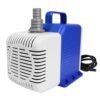
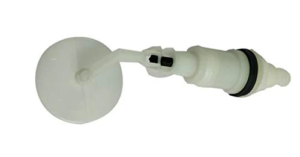
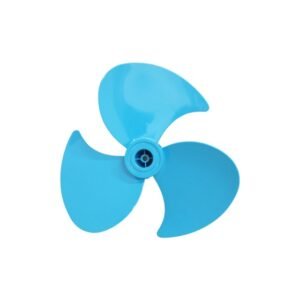
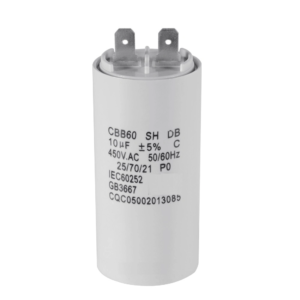
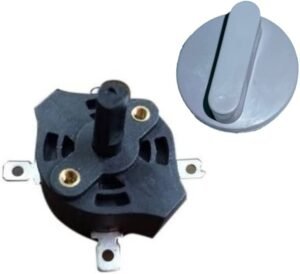
Reviews
There are no reviews yet.